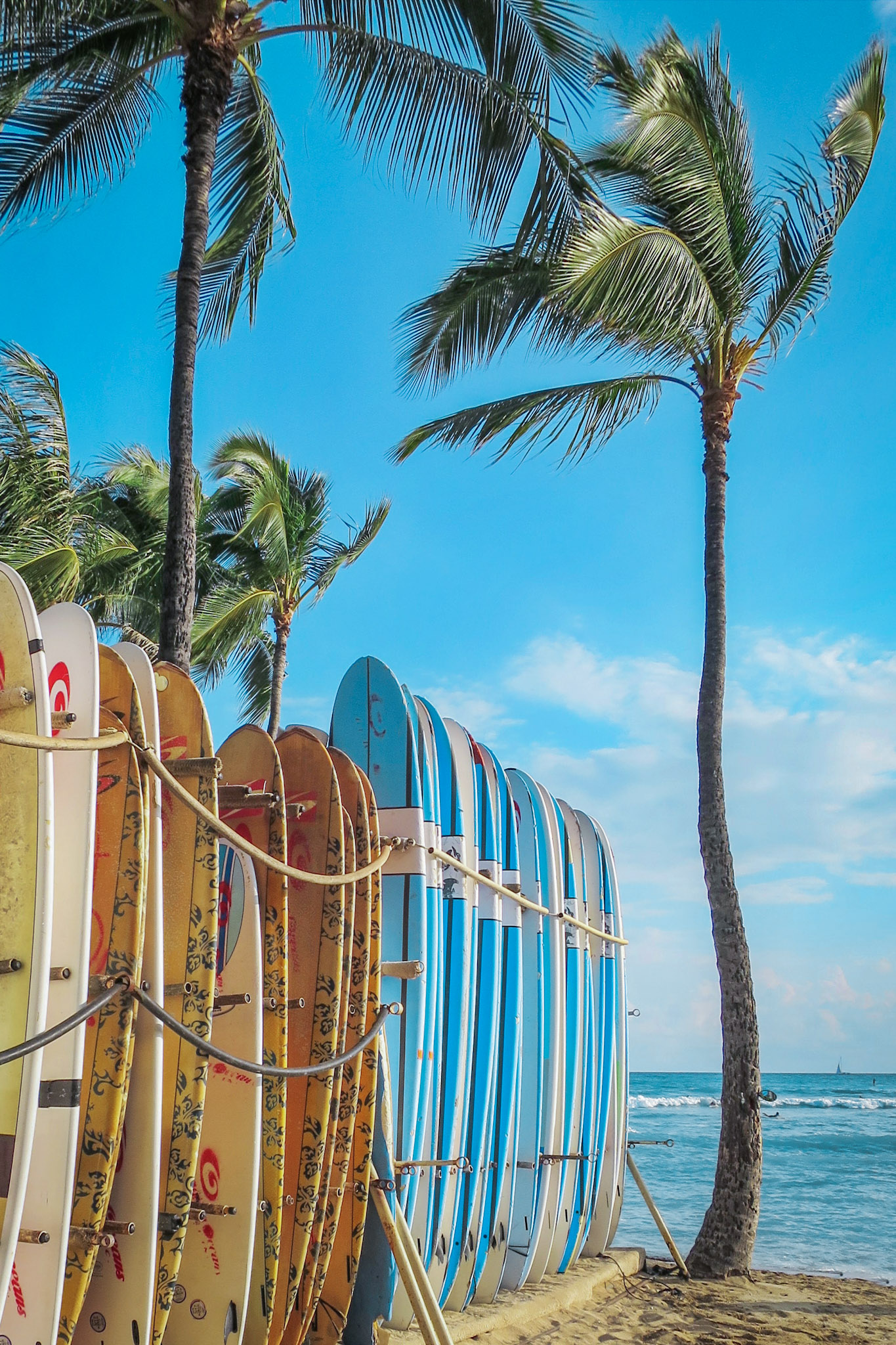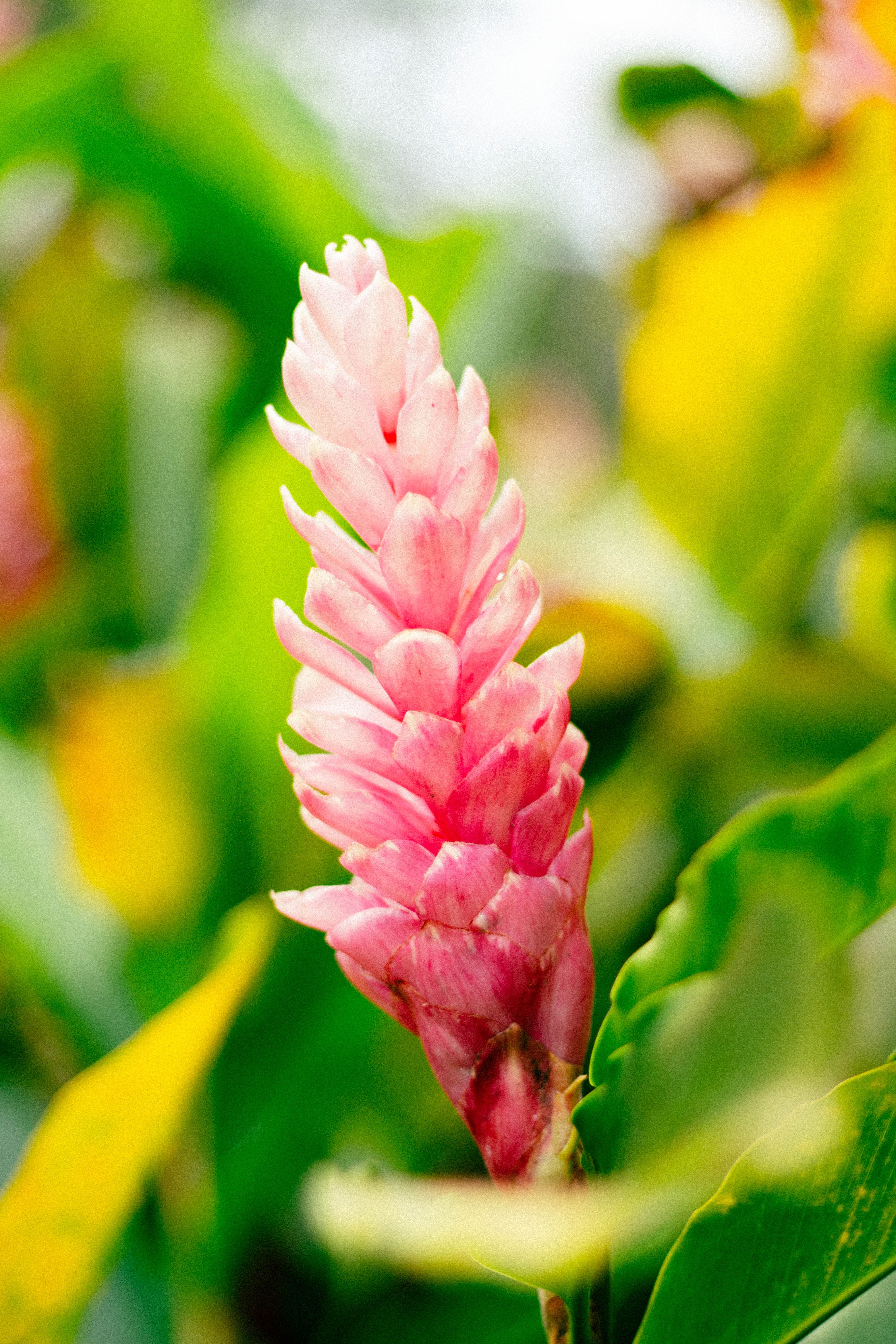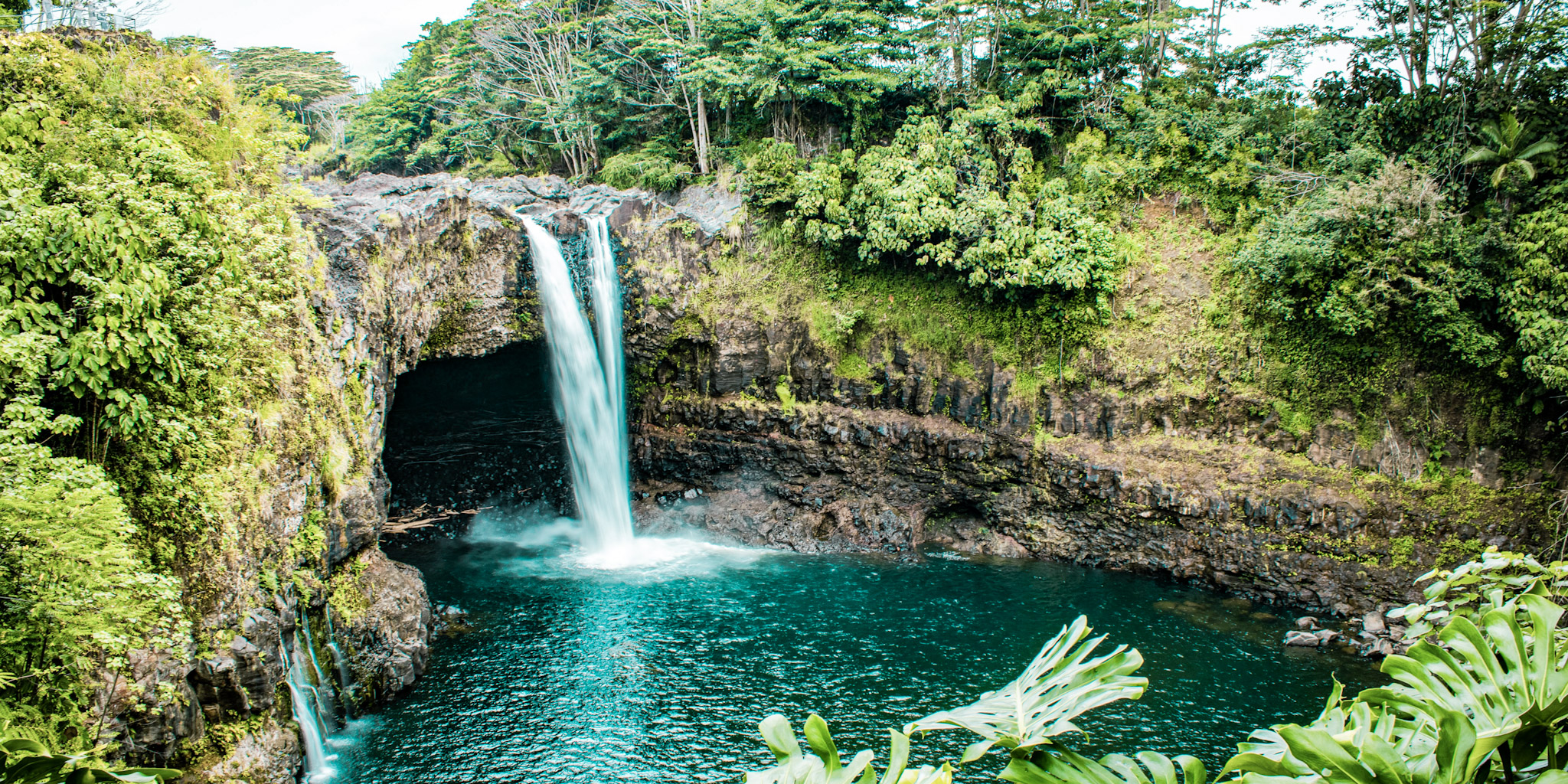About Hawaii
Overview
Nature lovers, history aficionados, adventurers, foodies and health and wellness enthusiasts can all find their happy place in Hawaii. 137 islands, islets and shoals make up the Hawaiian island chain that sits on the northern tip of the Polynesian Triangle. It's a land of diverse culture, unparalleled beauty and limitless natural wonders, no matter what island you visit.
Capital City: Honolulu
Population: 1.455 million
Time Zone: Hawaii-Aleutian Time Zone (GMT-10)
Emergency Number: 911


Packing List
Fun Facts
- It is said that Hawaii's first inhabitants sailed in voyaging canoes from the Marquesas Islands, between 300 and 800 CE. In the 12th century, settlers arrived from Tahiti.
- The Kilauea Caldera on the Big Island has produced lava flow since January 1983, making it the longest continuously erupting volcano.
- Kamehameha became Hawaii's first king in 1810. The islands had royal rulers until they became a US territory in 1898. To this day, you can still visit the only royal building on US soil, Iolani Palace.
- Mauna Kea on the Big Island is the tallest mountain on the planet! Measured from the seafloor, it tops out at 33,476 feet.
- Mount Haleakala is the world's largest dormant volcano. Most of the mountain is below the ocean - measured from the seafloor, it would be nearly 30,000 feet high! This volcano formed 75% of Maui.
- Hawaii is the only US state with two official languages: Hawaiian and English.

Weather
HONOLULU WEATHER
Hawaii's two seasons are just summer and winter; summer is the dry season and winter is the rainy season. Hurricane season is usually in July, August and September, although the risk of one is fairly low. It's important to remember that conditions vary greatly with altitude changes, the higher you go, the colder it gets. It sometimes even snows in Mauna Kea!
| Month | High | Low |
| January | 82° | 68° |
| February | 82° | 69° |
| March | 82° | 70° |
| April | 84° | 71° |
| May | 84° | 73° |
| June | 85° | 74° |
| July | 86° | 75° |
| August | 87° | 76° |
| September | 87° | 75° |
| October | 86° | 74° |
| November | 85° | 72° |
| December | 82° | 72° |
Tipping
Tipping Suggestions: Tips for Guides, drivers and restaurants are not included. Tips provide supplemental income, and, while not mandatory, are greatly appreciated. If the local teams have added to the experience, please reward them.
| Guides | USD $5-20 per person/per day | |
| Drivers | USD $3-4 per person/per day | |
| Restaurants | USD 15-20% per person/per meal |
FAQ
Where can I find information on travel safety? Click here for the most up-to-date information on safety while traveling.
Do I need a Visa? For US travelers, no. International visitors should check with their consulates to see if they need a visa, e-visa, or waiver. Make sure your passport is valid for at least six months after you return home and has two or more blank pages. Otherwise, some countries may not let you enter.
What about vaccines? For vaccination information, click here.
Is the water safe to drink? Yes, tap water in Hawaii is fine to consume.
Do you recommend travel insurance? While not required, we highly recommend all travelers get travel insurance for their trip to protect themselves from the unknown! Check out travel insurance options from our partner, worldnomads.com, or from a provider of your choice.
How much should I pack? As we will be using shared transfers and spaces throughout our tour we recommend all travelers pack as lightly as possible. Please review our luggage restrictions below.
What does public transportation look like? The only public transportation options in Hawaii are via bus. There are no trains, trams or subways.
Is Uber or Lyft available? Yes!
Luggage Restrictions
.jpg)


